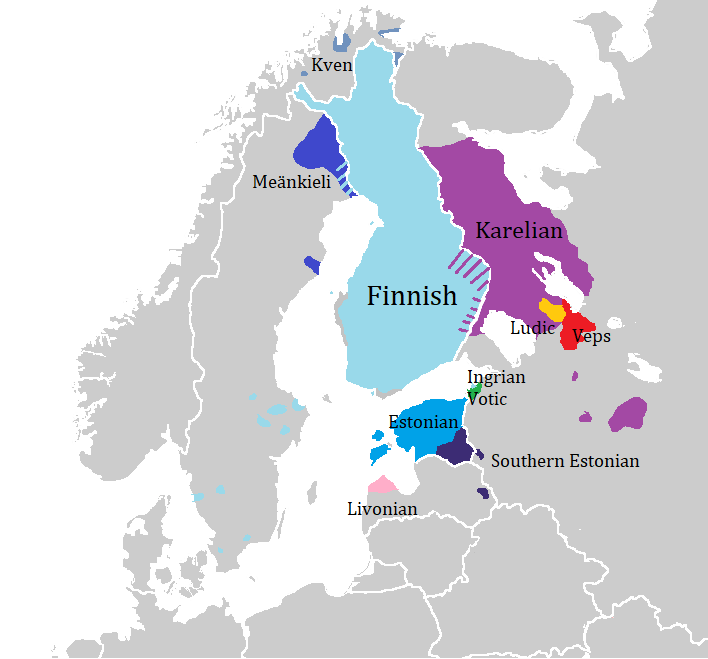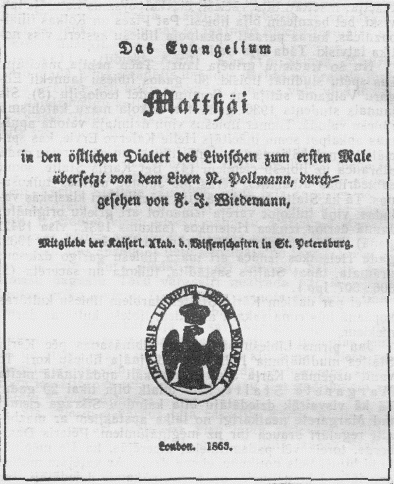|
Debitive
Debitive mood is a grammatical mood used in Latvian to express obligation or duty. In debitive mood all persons are formed by declining the pronoun in the dative case and using the 3rd person present stem prefixed with . Auxiliary verbs in case of compound tenses do not change, e.g., – "I have to read, I had to read, I have had to read, I will have to read, I should have read" (literally "I will have to had read" where the future expresses rather a wish and replacing the future with subjunctive () would be less unorthodox.) More complex compound tenses/moods can be formed as well, e.g., quotative debitive: man – "I will supposedly have to read," and so forth. Some authors question the status of Latvian debitive as a mood on the grounds that a mood by definition cannot be combined with another mood (as can be seen above.) Some speculateBjörn Hansen, Ferdinand De Haan. Modals in the Languages of Europe: A Reference Work. . "(..) seem to be connected with this language's fail ... [...More Info...] [...Related Items...] OR: [Wikipedia] [Google] [Baidu] |
Grammatical Mood
In linguistics, grammatical mood is a grammatical feature of verbs, used for signaling modality. That is, it is the use of verbal inflections that allow speakers to express their attitude toward what they are saying (for example, a statement of fact, of desire, of command, etc.). The term is also used more broadly to describe the syntactic expression of modality – that is, the use of verb phrases that do not involve inflection of the verb itself. Mood is distinct from grammatical tense or grammatical aspect, although the same word patterns are used for expressing more than one of these meanings at the same time in many languages, including English and most other modern Indo-European languages. (See tense–aspect–mood for a discussion of this.) Some examples of moods are indicative, interrogative, imperative, subjunctive, injunctive, optative, and potential. These are all finite forms of the verb. Infinitives, gerunds, and participles, which are non-finite form ... [...More Info...] [...Related Items...] OR: [Wikipedia] [Google] [Baidu] |
Latvian Language
Latvian ( ), also known as Lettish, is an Eastern Baltic language belonging to the Baltic branch of the Indo-European language family, spoken in the Baltic region. It is the language of Latvians and the official language of Latvia as well as one of the official languages of the European Union. There are about 1.3 million native Latvian speakers in Latvia and 100,000 abroad. Altogether, 2 million, or 80% of the population of Latvia, speak Latvian. Of those, around 1.16 million or 62% of Latvia's population use it as their primary language at home, however excluding the Latgale Region it is spoken as a native language in villages and towns by over 90% of the population. As a Baltic language, Latvian is most closely related to neighboring Lithuanian (as well as Old Prussian, an extinct Baltic language); however Latvian has followed a more rapid development. In addition, there is some disagreement whether Latgalian and Kursenieki, which are mutually intelligible with Latvian ... [...More Info...] [...Related Items...] OR: [Wikipedia] [Google] [Baidu] |
Dative Case
In grammar, the dative case ( abbreviated , or sometimes when it is a core argument) is a grammatical case used in some languages to indicate the recipient or beneficiary of an action, as in "Maria Jacobo potum dedit", Latin for "Maria gave Jacob a drink". In this example, the dative marks what would be considered the indirect object of a verb in English. Sometimes the dative has functions unrelated to giving. In Scottish Gaelic and Irish, the term ''dative case'' is used in traditional grammars to refer to the prepositional case-marking of nouns following simple prepositions and the definite article. In Georgian and Hindustani (Hindi-Urdu), the dative case can also mark the subject of a sentence.Bhatt, Rajesh (2003). Experiencer subjects. Handout from MIT course “Structure of the Modern Indo-Aryan Languages”. This is called the dative construction. In Hindi, the dative construction is not limited to only certain verbs or tenses and it can be used with any verb in any ten ... [...More Info...] [...Related Items...] OR: [Wikipedia] [Google] [Baidu] |
Östen Dahl
Östen Dahl (; born 4 November 1945 in Stockholm) is a Swedish linguist and professor best known for pioneering a marker-based approach to tense and aspect in linguistic typology. Dahl finished his PhD at the University of Gothenburg and subsequently worked there as a docent before becoming professor of general linguistics at the University of Stockholm in 1980. Honours * Royal Swedish Academy of Sciences, member since 1997 * Royal Swedish Academy of Letters, History and Antiquities, member since 1998 * Academia Europaea, member since 2006 * honorary doctorate of philosophy from the University of Helsinki in 2003 * Norwegian Academy of Science and Letters The Norwegian Academy of Science and Letters ( no, Det Norske Videnskaps-Akademi, DNVA) is a learned society based in Oslo, Norway. Its purpose is to support the advancement of science and scholarship in Norway. History The Royal Frederick Unive ..., member Works * Tense and Aspect Systems'' Oxford: Blackwell, 1985 * e ... [...More Info...] [...Related Items...] OR: [Wikipedia] [Google] [Baidu] |
Maria Koptjevskaja-Tamm
Maria Koptjevskaja-Tamm is a Russian-born linguist and typologist who is Professor of General Linguistics at Stockholm University. Biography Originally from Moscow, Koptjevskaja-Tamm's interest in linguistics was stimulated when as a teenager she participated in the Moscow Linguistics Olympiad, winning a medal. She graduated from Moscow State University in 1979 and moved to Sweden in 1980, where she received her PhD in linguistics from Stockholm University in 1988. After working as a researcher on a project on part-of-speech systems in the world's languages, she was appointed docent in linguistics at Stockholm University in 1993, and was promoted to full professor in 2001. Koptjevskaja-Tamm was elected as member of the Academia Europaea in 2010. Since 2018 she has been editor-in-chief of the journal Linguistic Typology. Research Koptjevskaja-Tamm carries out research in the field of linguistic typology, focusing on syntax and semantics. Her 2002 monograph on the structure and ... [...More Info...] [...Related Items...] OR: [Wikipedia] [Google] [Baidu] |
Finnic Languages
The Finnic (''Fennic'') or more precisely Balto-Finnic (Balto-Fennic, Baltic Finnic, Baltic Fennic) languages constitute a branch of the Uralic language family spoken around the Baltic Sea by the Baltic Finnic peoples. There are around 7 million speakers, who live mainly in Finland and Estonia. Traditionally, eight Finnic languages have been recognized. The major modern representatives of the family are Finnish and Estonian, the official languages of their respective nation states.Finnic Peoples at Encyclopædia Britannica The other Finnic languages in the Baltic Sea region are Ingrian and |
Livonian Language
The Livonian language ( liv, līvõ kēļ, link=no or ; et, liivi keel, link=yes) is a Finnic language whose native land is the Livonian Coast of the Gulf of Livonia, located in the north of the Kurzeme peninsula in Latvia. Although its last native speaker died in 2013, there are about 40 reported L2 speakers and 210 having reported some knowledge of the language. Possibly uniquely among the Uralic languages, Livonian has been described as a pitch-accent language (see below). Currently, the only person whose native language is Livonian is Kuldi Medne who was born in 2020. Her parents are Livonian language revival activists Jānis Mednis and Renāte Medne. Some ethnic Livonians are learning or have learned Livonian in an attempt to revive it, but because ethnic Livonians are a small minority, opportunities to use Livonian are limited. The Estonian newspaper '' Eesti Päevaleht'' erroneously announced that Viktors Bertholds, who died on 28 February 2009, was the last native ... [...More Info...] [...Related Items...] OR: [Wikipedia] [Google] [Baidu] |
Grammatical Moods
In linguistics, grammatical mood is a grammatical feature of verbs, used for signaling modality. That is, it is the use of verbal inflections that allow speakers to express their attitude toward what they are saying (for example, a statement of fact, of desire, of command, etc.). The term is also used more broadly to describe the syntactic expression of modality – that is, the use of verb phrases that do not involve inflection of the verb itself. Mood is distinct from grammatical tense or grammatical aspect, although the same word patterns are used for expressing more than one of these meanings at the same time in many languages, including English and most other modern Indo-European languages. (See tense–aspect–mood for a discussion of this.) Some examples of moods are indicative, interrogative, imperative, subjunctive, injunctive, optative, and potential. These are all finite forms of the verb. Infinitives, gerunds, and participles, which are non-finite forms of the v ... [...More Info...] [...Related Items...] OR: [Wikipedia] [Google] [Baidu] |

